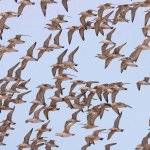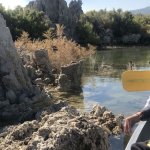The Arctic Migratory Bird Initiative (AMBI) was formed by the Arctic Council in response to the results of the 2013 Arctic Biodiversity Assessment, which recommended reducing stress factors for migratory species across their entire range.
AMBI seeks to improve the status and secure the long-term sustainability of Arctic breeding migratory bird populations, while protecting the Arctic’s indigenous people and their ways of life. AMBI is an initiative of Conservation of Arctic Flora and Fauna (CAFF), the biodiversity working group of the Arctic Council.
AMBI organizes activities across four flyways – East Asian-Australasian, African-Eurasian, Americas, and Circumpolar. Between 2018 and 2019, AMBI developed its work plan for the next five years. In the Americas, the work plan covers four main themes, which we will describe in more detail below. The Americas plan focuses on five Arctic-breeding species: Red Knot (Calidris canutus), Semipalmated Sandpiper (C. pusilla), Buff-breasted Sandpiper (C. subruficollis), Red-necked Phalarope (Phalaropus lobatus), and Red Phalarope (Ph. fulicarius).
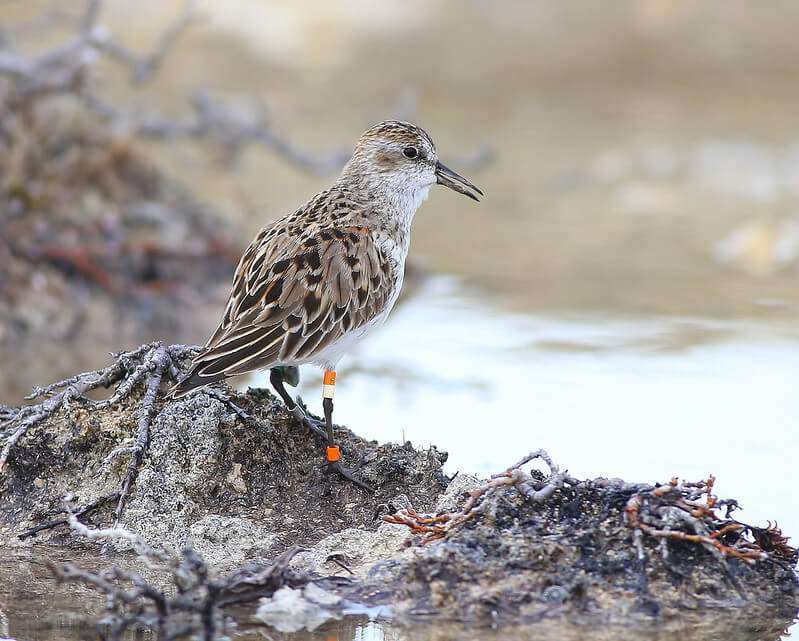
A Semipalmated Sandpiper tagged with a geolocator on Coats Island in northern Hudson Bay, Nunavut, Canada. Photo: Brad Winn.
Effects of overabundant geese populations on Arctic shorebird habitat
Between 2015 and 2019, AMBI evaluated the relationship between habitat destruction caused by overabundant goose populations and the decline of shorebird populations in the eastern Canadian Arctic. AMBI’s second-phase work plan prioritizes expanding this analysis to western Canada and Alaska.
Preliminary results indicate that the populations of white geese (Snow Goose Chen caerulscens and Ross’s Goose Ch. rossii) are increasing in Alaska, and it is urgent to determine the conservation impact of this increase on shorebirds that breed in Alaska. Additionally, the management actions proposed during AMBI Phase I will be promoted with Inuit organizations and land management boards and agencies in Canada, ensuring that Traditional Knowledge and the perspectives of Inuit are incorporated into management decisions.
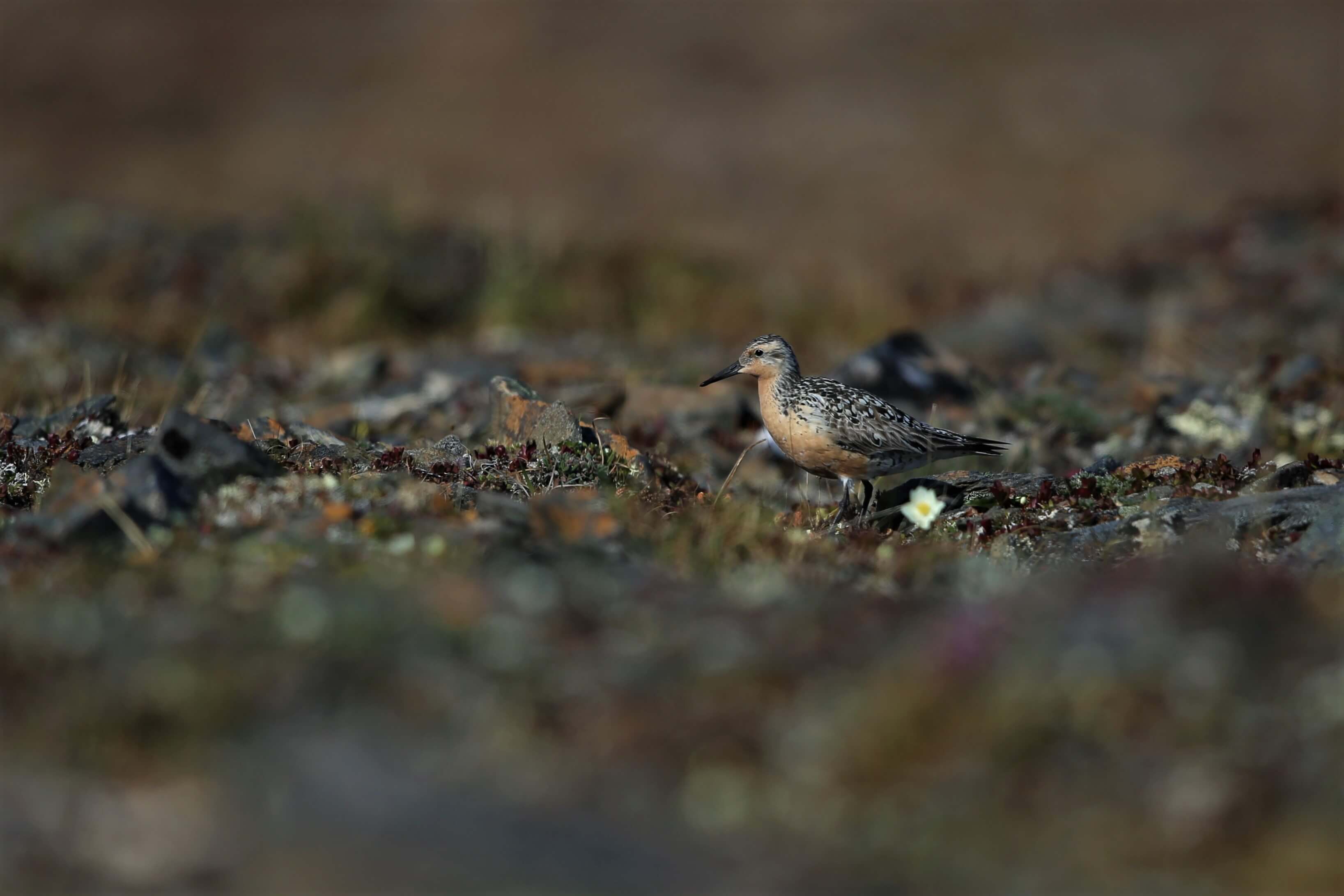
A roselaari Red Knot on breeding grounds in Alaska. Photo: Brad Winn.
Climate change resilience in shorebird breeding and wintering habitat
An analysis under AMBI Phase I assessed climate change resiliency of breeding habitat for Red Knot and Semipalmated Sandpiper, selected as representatives of a wider range of Arctic-nesting shorebird species. The study indicated that Red Knot breeding habitat will likely diminish in area and progressively recede to the north, while Semipalmated Sandpiper breeding habitat is predicted to increase in area along the western and central North Slope and the central and eastern Arctic.
The identification of climate change resilient areas throughout migration routes, stopover sites, and wintering areas is a knowledge gap for Arctic breeding shorebirds. This AMBI work plan proposes conducting an analysis of the resilience of shorebird wintering sites to climate change, and using this information to promote the protection of these habitats.
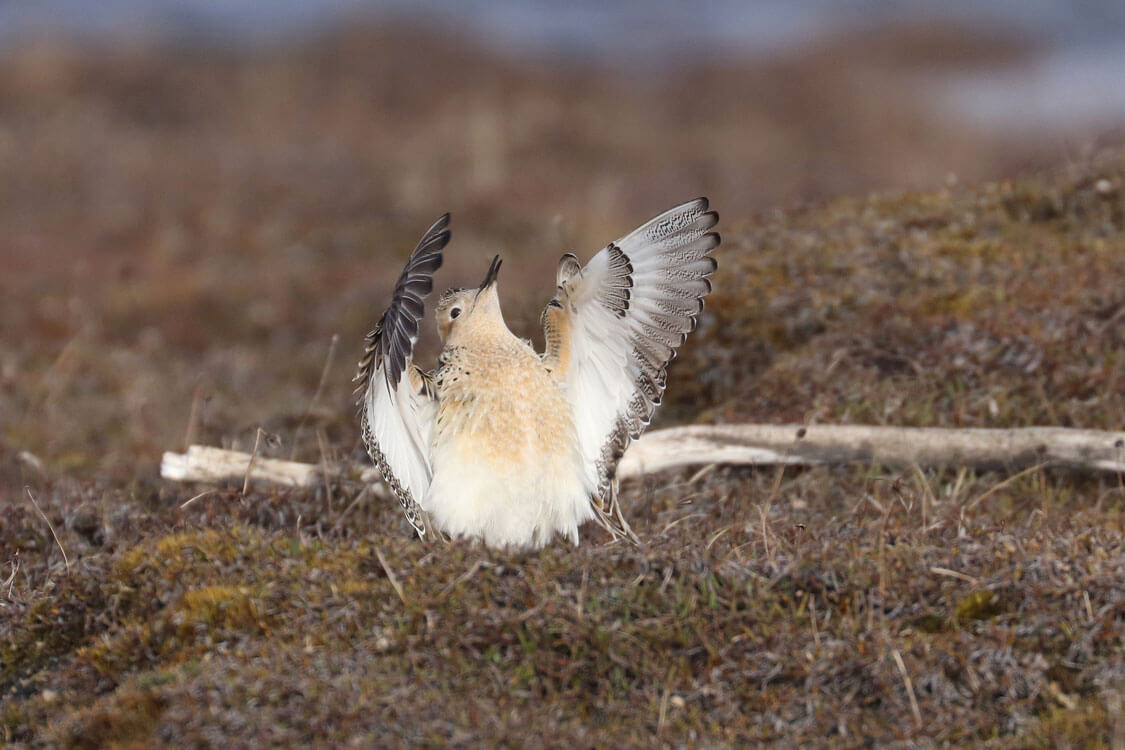
A male Buff-breasted Sandpiper (Calidris subruficollis) displays for females in the Arctic National Wildlife Refuge, Alaska. Photo: Shiloh Schulte.
Deterioration of shorebird habitat caused by human intrusions, disturbances, destruction, and degradation
Shorebirds are harvested both legally and illegally in many parts of their range. A working group under AFSIi has been working to understand the possible impacts of shorebird hunting in the Caribbean and northern South America. AMBI supports the activities of this working group under an MoUii signed by Canada, France, and the United States. AMBI will also support efforts in Alaska to reduce hunting of shorebird species that are showing declines or are considered priorities for other reasons.
An emerging threat in the Arctic is the presence of micro-plastics in the marine environment, but little is known about their effects on shorebirds. AMBI will promote assessments of the effects of plastic contamination on shorebirds, particularly Red-necked Phalarope and Red Phalarope. AMBI will also promote the identification of critical threats to shorebirds and ways to mitigate these threats at existing WHSRN sites and IBAsiii. In addition, AMBI will encourage the establishment of formal linkages between sties to ensure range-wide conservation.
Coastal developments such as rice farms, shrimp aquaculture, and others are often recipients of funding from development banks, which can require compliance with environmental considerations. AMBI will promote studies to determine the overlap of these developments with important shorebird habitats.
AMBI will also promote the designating of important shorebird sites into international conservation frameworks, building of networks with key stakeholders to stimulate sustainable development, and incorporating important shorebird sites into shorebird plans, national wetlands plans, and National Biodiversity Strategies and Action Plans (NBSAPs).
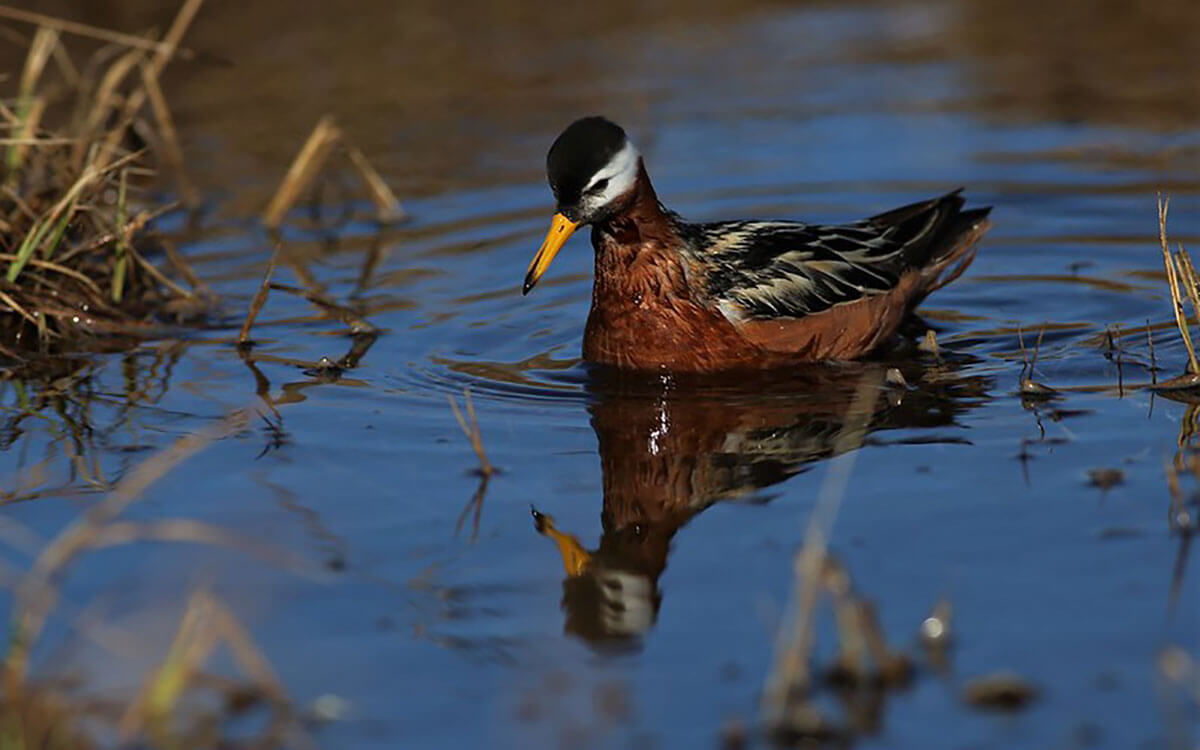
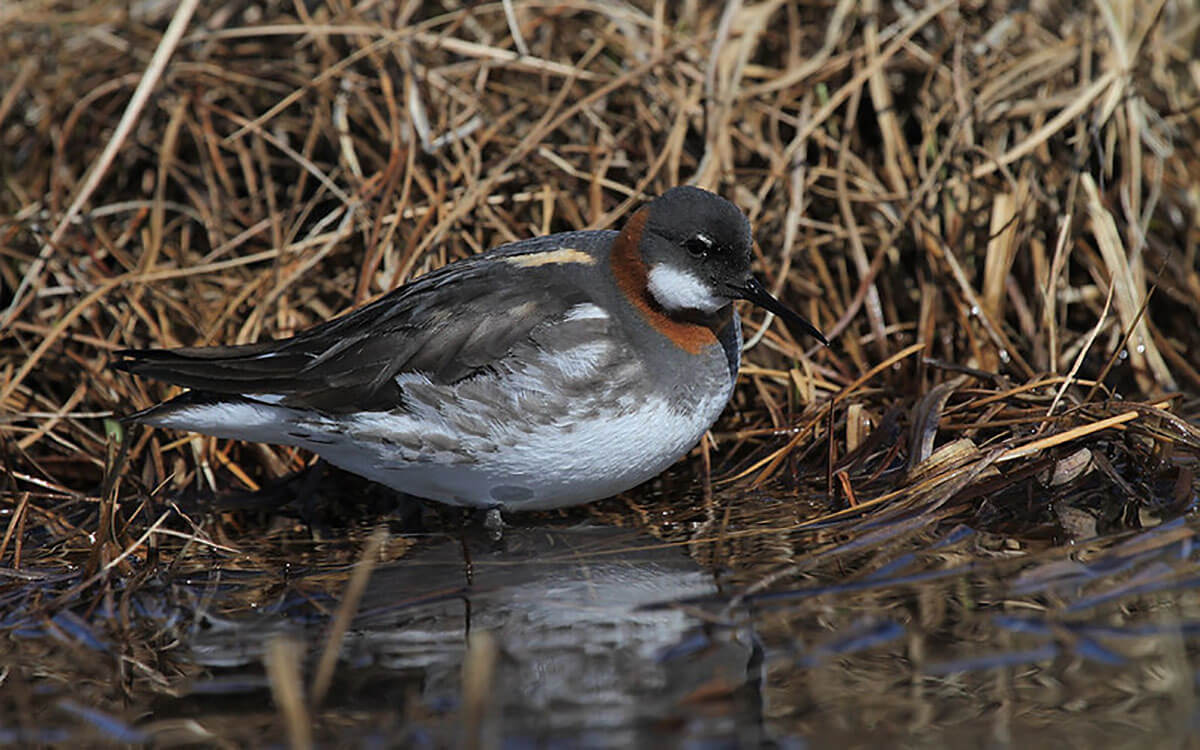
Left: Red Phalarope (Phalaropus fulicarius) on Coats Island in Hudson Bay, Nunavut, Canada. Right: Red-necked Phalarope (Phalaropus lobatus) in the Arctic National Wildlife Refuge, Alaska. Photos: Brad Winn.
Flyway planning and implementation
AMBI supports ongoing processes at the hemispheric level, such as hemispheric conservation strategies, regional initiatives, and frameworks to conserve shorebirds and their habitats on a flyway scale. In this second phase, AMBI will continue supporting and promoting AFSI and PASCSiv, and will help lead and promote a Mid-continental Flyway planning effort.
Isadora is also interested in getting to know firsthand the ways in which AMBI can collaborate and support the actions at its sites. If you have any questions, you can write to Isadora directly at isadora@caff.is.
iAFSI: Atlantic Flyway Shorebird Initiative
iiMoU: Memorandum of Understanding
iiiIBAs: Important Bird and Biodiversity Areas
ivPASCS: Pacific Americas Shorebird Conservation Strategy
Cover Photo: A male Buff-breasted Sandpiper (Calidris subruficollis) displays for a nearby female in the Arctic National Wildlife Refuge. Photo: Shiloh Schulte.





